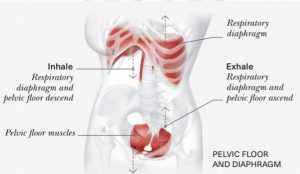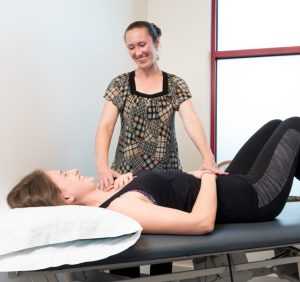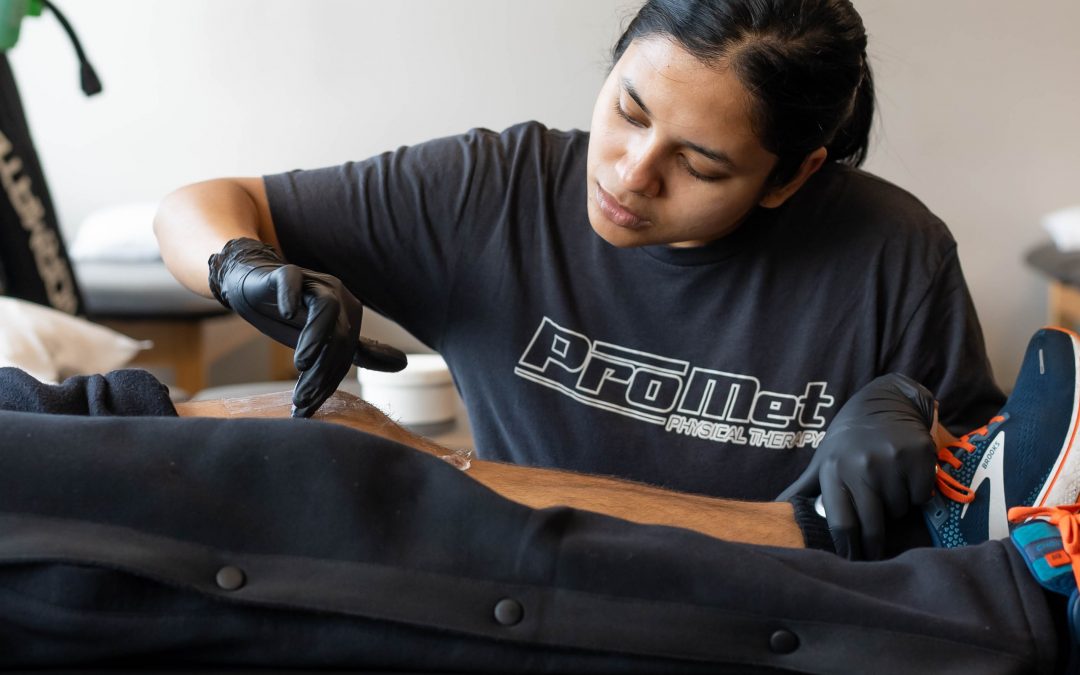“Just breathe” they say…but how?
Pelvic pain is pain felt in the lower abdomen, pelvis or perineum. One in seven women in the United States is affected by chronic pelvic pain. The prevalence is similar to migraine headaches, asthma and chronic back pain. Pelvic pain is considered “chronic” when it lasts for over 6 months. Physical therapists help people experiencing pelvic pain by providing proper assessment and helping to restore strength and flexibility in the muscles and joints of the pelvic region and get them back to their prior level of functional activities.
To understand pelvic pain, it is important to understand the structure of pelvic floor muscles and the supporting structures. First, think of the pelvic floor as a sagging hammock. The muscular components supporting this hammock are your –
- Core muscles
- Inner thigh muscles
- Deep low back muscles

The diaphragm and the pelvic floor have a directly proportional pressure relationship. Due to the positioning of these muscles, when the diaphragm descends- the pelvic floor descends and vice versa. This pressure relationship between the structures plays a key role in development of excessive tension and tightness in muscles leading to pelvic floor hypertonicity when the diaphragm is elevated.
How to perform diaphragmatic breathing?
It is important to be mindful about this pressure relationship between the diaphragm and the pelvic floor muscles when performing diaphragmatic breathing.
 When performing diaphragmatic breathing make sure you are in a comfortable position for effective relaxation of all the supporting structures – sitting, laying on a flat surface. As you inhale through the nose, your chest cavity fills with air and the diaphragm drops, down toward the pelvis while the pelvic floor lengthens. As you exhale, you should feel the pelvic floor recoil away from the chair or bed. As you engage in diaphragmatic breathing, make sure the “support components” of the hammock are all slackened and relaxed to allow the pelvic floor to move through its full range.
When performing diaphragmatic breathing make sure you are in a comfortable position for effective relaxation of all the supporting structures – sitting, laying on a flat surface. As you inhale through the nose, your chest cavity fills with air and the diaphragm drops, down toward the pelvis while the pelvic floor lengthens. As you exhale, you should feel the pelvic floor recoil away from the chair or bed. As you engage in diaphragmatic breathing, make sure the “support components” of the hammock are all slackened and relaxed to allow the pelvic floor to move through its full range.
Chronic pelvic pain can be disabling and can severely affect one’s quality of life. Our licensed physical therapists are here to answer your questions that you may have regarding this new information and to help you regain control of your life. Feel free to stop by our Glendale, Manhasset or Kew Gardens (soon to be Briarwood) locations to set up an initial evaluation to get you moving in the right direction with an individualized treatment plan tailored to meet your goals.
Pooja Patel, PT, DPT
References
Dydyk AM, Gupta N. Chronic Pelvic Pain. [Updated 2021 Jul 26]. In: StatPearls [Internet]. Treasure Island (FL):
StatPearls Publishing; 2021 Jan-. Available from: https://www.ncbi.nlm.nih.gov/books/NBK554585/




